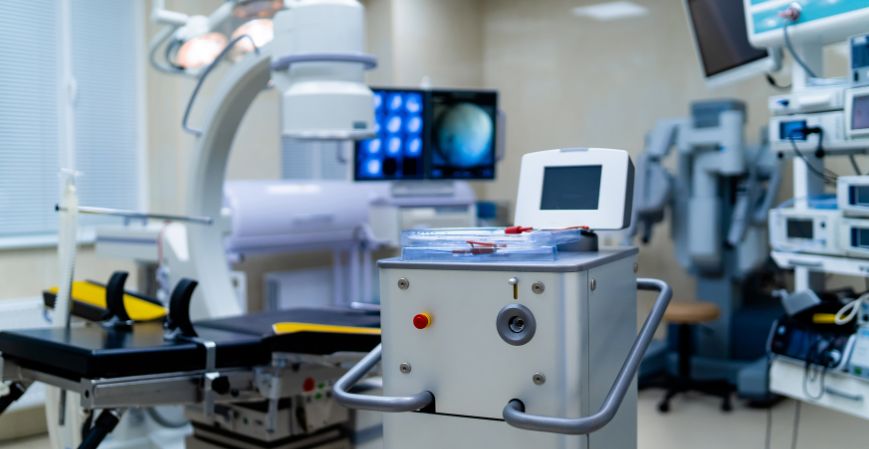How Big Will the Smart Medical Devices Market Be in 2034?
As the global healthcare industry undergoes rapid digital transformation, smart medical devices are becoming pivotal in enabling real-time monitoring, remote diagnostics, and personalized treatment. According to Expert Market Research, the global smart medical devices market was valued at USD 39.10 billion in 2024, with projections estimating a CAGR of 7.50% between 2025 and 2034, reaching approximately USD 80.59 billion by 2034. This article explores the key market dynamics, trends, and segmentation insights shaping the industry’s future.
Smart Medical Devices Market Share
The market share within the smart medical devices industry is distributed across device types, end users, and regions. North America currently leads the market, driven by advanced healthcare infrastructure, high per capita health expenditure, and strong adoption of wearable and portable medical technologies.
Among device types, diagnostic and imaging devices and therapeutic devices hold a dominant share, with blood glucose monitors and hearing aids witnessing substantial market penetration due to the rising prevalence of chronic conditions such as diabetes and hearing loss.
Key players dominating the global smart medical devices landscape include:
- Koninklijke Philips N.V.
- Medtronic
- Inogen Inc.
- Drive DeVilbiss International
- BioTelemetry (a Philips Company)
- BPL Medical Technologies
- Dr Trust
These companies are recognized for continuous innovation, diversified product portfolios, and strategic global outreach.
Smart Medical Devices Market Growth & Trends
Several factors are fueling the smart medical devices market:
Chronic Disease Burden
The global increase in lifestyle-related illnesses such as diabetes, cardiovascular diseases, and respiratory disorders is creating sustained demand for smart monitoring tools and therapeutic devices.
Remote Patient Monitoring (RPM)
The shift toward telemedicine and home-based healthcare—accelerated by the COVID-19 pandemic—has intensified the need for smart devices that can track health metrics in real time, reducing hospital visits and enabling timely intervention.
Wearable Health Technology
Innovations in wearables, like ECG monitors, fitness bands, and portable oxygen concentrators, are reshaping patient care by offering continuous health tracking and connectivity with healthcare providers.
Artificial Intelligence & IoT Integration
Smart medical devices are increasingly powered by AI algorithms and IoT technology, enabling predictive diagnostics and real-time alerts. These technologies are helping healthcare providers make informed clinical decisions.
According to Wikipedia, smart medical devices fall under the broader category of medical devices but are enhanced with connectivity and data analysis features that distinguish them in modern healthcare.
Smart Medical Devices Market Case Studies & News
Several recent developments highlight the growing momentum in the market:
- Philips launched a new line of connected wearable biosensors designed to monitor respiratory rates, heart rates, and temperature, targeting both hospital and home settings.
- Inogen Inc. expanded its line of portable oxygen concentrators, improving access for patients with chronic obstructive pulmonary disease (COPD).
- In 2023, Medtronic collaborated with BioIntelliSense to incorporate continuous vital sign monitoring into hospital-at-home programs.
These innovations demonstrate how companies are addressing evolving healthcare delivery models while improving patient outcomes.
Smart Medical Devices Market Analysis
Competitive Landscape
The market is moderately consolidated with intense competition among major players and emerging startups. R&D investment and product innovation are critical differentiators. Many companies are adopting strategic partnerships to broaden their portfolios and reach.
Regional Insights
- North America holds the largest share due to favorable reimbursement policies and advanced healthcare ecosystems.
- Europe is witnessing steady growth driven by public health awareness and technological uptake.
- Asia Pacific is emerging rapidly, driven by expanding healthcare infrastructure, rising disposable incomes, and government initiatives promoting digital health.
Regulatory Impacts
Stringent regulatory frameworks from bodies like the FDA and European Medicines Agency (EMA) ensure product efficacy and safety but also extend time-to-market for new devices.
Smart Medical Devices Market Segmentation
By Device Type
- Diagnostic and Imaging Devices: Blood Glucose Monitors, EEG/ECG Monitors, Blood Pressure Monitors
- Therapeutic Devices: Portable Oxygen Concentrators, Neuro-stimulators, Hearing Aids
- Injury Prevention and Rehabilitation Devices: Body Motion Devices, Fall Detection Devices
By Type
- Portable Devices
- Wearable Devices
- Others
By End User
- Hospitals and Clinics
- Homecare Settings
- Ambulatory Surgical Centers
- Others
By Region
- North America
- Europe
- Asia Pacific
- Latin America
- Middle East and Africa

